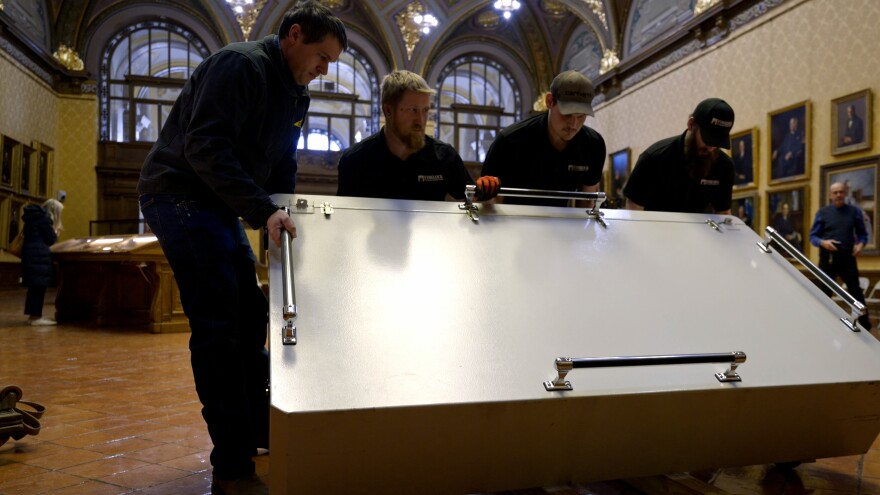Students across Connecticut are taught the legend of the Charter Oak. How the king of England demanded that the state turn over its charter, but when the time came, the charter was spirited away and hidden in an oak tree.
One thing the legend leaves out is that Connecticut had two copies of its charter. There was the original, which is heavily adorned, and a second copy which is much more plain. The written record suggests that the copy was hidden in the tree, and its fate becomes murky after that, according to State Archivist Lizette Pelletier.
The original, however, was secreted away before the whole oak incident. During the last few centuries, it was kept safe and displayed in various government buildings.

But time and the elements have taken their toll. Even behind glass, light has caused fading in the charter. Hanging vertically also caused the parchment, which is not paper, but thinned animal skins, to stretch and sag. In 1878 the originally separate three-page document was glued together on a fabric backing to create one large piece. And in the late 1800s most of the document was re-inked by a clerk in the secretary of the state’s office.
The project to conserve the charter began in 2018, and it faced one major hurdle before the work could begin, transporting the document to the Northeast Document Conservation Center (NEDCC) in Andover, Massachusetts. The biggest risk was determined to be if the transportation vehicle had an accident resulting in a fire.

The team from FIRELOCK, a Pennsylvania-based company that makes fireproof vaults, was brought in to tackle this challenge. They constructed a custom mobile vault to transport and house the charter. The case is roughly the size of a dinner table, a foot thick, and rated to keep its contents safe from flames for up to four hours. It is also oriented so that the charter can be stored lying flat to avoid the negative effects of hanging.
Once at NEDCC, Conservator Nicole Boodle took the lead on carefully examining and cleaning the document. She emphasized that the process was aimed at stabilizing and preserving the charter, “for the community to enjoy in the future. It’s not necessarily about making it pretty.”

One interesting discovery Boodle made in her work relates to that re-inking. As she proceeded down the document with a microscope, she kept noticing an odd glittering. Upon closer examination, she determined that the ink used in the re-lettering had a gold mica pigment mixed into it. “It’s such a weird little detail that is also sort of adorable and considerate of the piece,” she said. She said it spoke to the importance and value that was placed on this document.
Connecticut’s Charter is now back home from the conservation work. However, those going to the State Library today will see a digital reproduction hanging in the original charter’s frame. This version has had additional digital cleaning done, removing ink stains that can’t currently be removed from the original. From now on, the original charter is getting what Boodle describes as, “some well deserved rest.” It will spend most of its time in its protective safe, only coming out for display on special occasions.






